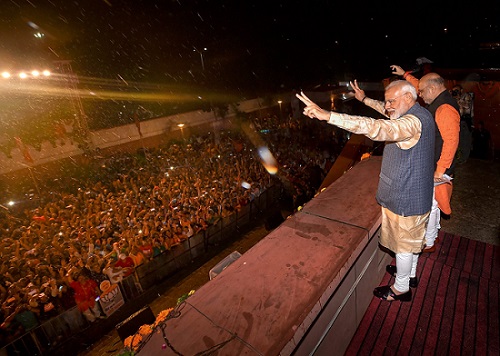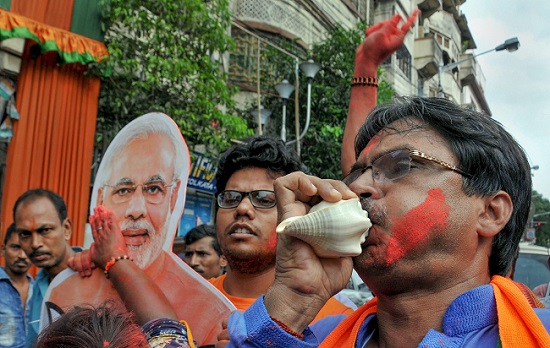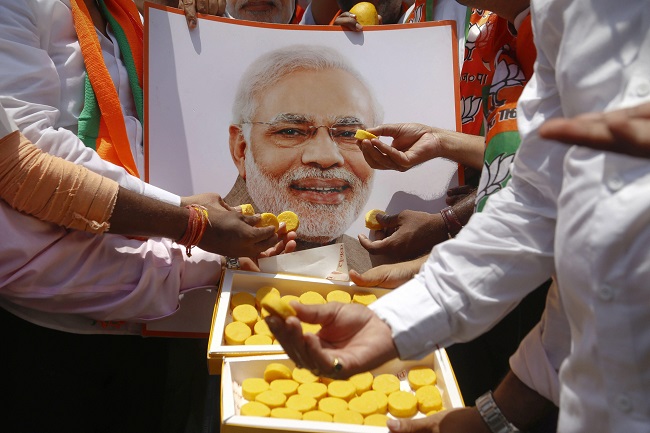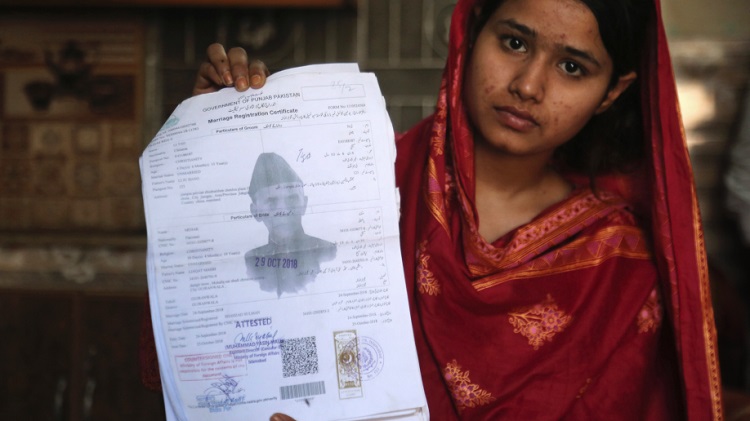The euphoria over Narendra Modi’s second coming is too heady at this moment. Getting re-elected with his own party, the BJP, getting a clear majority on its own is a very significant achievement. Very, very significant when you see it from the perspective of there being an absence of a government with a single-party majority from 1989 to 2014. For a quarter century.
These results will LIVE for five years, an entire tenure and it was amusing to read Shobha De’s comments about them. She wrote that the results could not be killed with over-analysis. In fact, that sounds more like wishful thinking and desire. If only it were possible to kill them, she and others like her would have done it! Without any remorse. That luxury is not available to anyone in India following a first past the post system or determination of majority. Fortunately. Gushing over Modi victory is one thing. A serious reality check another.
Modi is far behind Rajiv Gandhi who had over 400 MPs that was over two-thirds majority. Modi is nowhere near that figure of supporting lawmakers. He just doesn’t have that kind of support even with his allies. It seems almost all Congress PMs, at least once in their tenures, were better placed than Modi is now. The reference here is to those from the Nehru-Gandhi dynasty. Lal Bahadur Shastri and PV Narasimha Rao are excluded from that. Never mind that they discharged their duties extraordinarily well. Manmohan too doesn’t count. The dynasts had a larger pool of MPs on the Treasury Benches when they ruled. Perhaps it only led to their arrogance and sense of entitlement getting more readily entrenched in them.
Building narratives about what Modi might do is one thing, but constitutional checks and balances are another thing. They keep him on the back foot. Whoever said no to more! More of power, more of support, more of money, and so on. Modi has, less than, not more of MPs than he needs (or needed) to push forward his agenda. It needs to be understood here that two-thirds majority can lead to passage of laws as conceived by parties, or individuals. A lesser majority acts as a serious constraint and leads to compromises, it often dilutes a proposed legislation beyond recognition. It is often being said that not enough progress was made on Ayodhya Ram Temple despite a clear majority. Or on the issue of Uniform Civil Code. With a clear majority, but far less than two-thirds, Modi can only do as much as his mandate allows. These issues are there amongst us and cannot be wished away. Or brushed under the carpet, as it were. They need to be tackled now so that they are not campaign issues in the future.
Congress’s Kapil Sibal had argued that Ayodhya Ram Temple hearings in the Supreme Court be held after May so that they do not influence the general elections. That has happened and we are in the last week of May. The apex court can perhaps order hearings on a fast-track basis. Decide on the issue in accordance with established laws. Why let the issue linger on and on?
In the near future, crumbling of the Karnataka government seems imminent. More due to the inability of the incumbent Gowda dynasty to hold on than due to any serious nudges from outside. The Congress, despite larger numbers, played second fiddle to Kumaraswamy in May last year as keeping “the BJP out” was its top priority. This explanation will hardly help a year later and we can see this political dynasty crumble. In south, Jagan Reddy and Stalin are the rising dynasts even as Scindia, Akhilesh and the RJD clan are on their way out. Incidentally, one Congress spokesperson had claimed that south was more educated and hence voted less in favour of Modi! How will she now explain the rise of Reddy and Stalin? Her contortions will make for an interesting visual picture.
For now, one thing can be thought of as a takeaway from this round of elections. Hard work helps in all circumstances. Smriti Irani is a prime example of that. Relentlessly carrying on her work in Amethi and emerging as a giant killer. Naveen Patnaik, working diligently and without flashy style, managed to tame the BJP in his backyard. On his chosen turf. There is a lesson in that: Nobody is invincible. Not Mamata Banerjee in West Bengal either. Let us put the acrimony of campaigning behind and move on. Let us forget the bitterness and mend fences. After all, we are all Indians and working for the betterment of the nation is something that is our common goal. Or it should be. Let us bury the proverbial hatchet. Only to dig it out five years later, as has been ordained in our magnificent Constitution.











